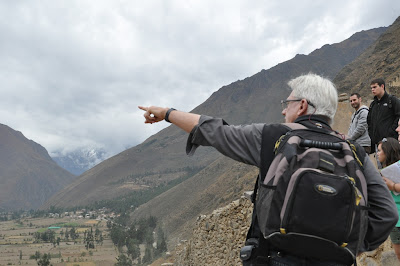Hello family and friends,
Today we spent most of the day in transit between our campsite at the hotsprings of Lares and our final destination at our hostal in Cusco. We woke up listening to locals who were already splashing in the hotsprings at 6:30!
After a peanut butter and banana pancake breakfast we set off on another long journey, this time by bus. After the hike yesterday it was nice to sit back and relax on our bus for morning. We stopped briefly in Pisac for an empanada lunch break before continuing on to Cusco.
Our hostal is located in the narrow alleys of Cusco's San Blas neighborhood, which made getting our luggage to our rooms a challenge, but the views from our rooms are definitely worth it. After taking some time to shower and settle in the group celebrated our arrival in Cusco with a big dinner before getting some well-deserved sleep. We’re looking forward to exploring Cusco with Peter Frost tomorrow.
Saludos,
Jordan and Lindsay
 We woke up this morning at the hotsprings of Lares
We woke up this morning at the hotsprings of Lares Photo by expedition leader Lindsay Mackenzie
 Well, most of us woke up (this is Jordan in his sleeping bag)
Well, most of us woke up (this is Jordan in his sleeping bag)Photo by Lindsay Mackenzie
 The valley view from the bus en route from Lares to Cusco
The valley view from the bus en route from Lares to CuscoPhoto by Lindsay Mackenzie
 Cusco at night. . . this is the vista from our hostal
Cusco at night. . . this is the vista from our hostalPhoto by expedition leader Jordan Gantz
















































